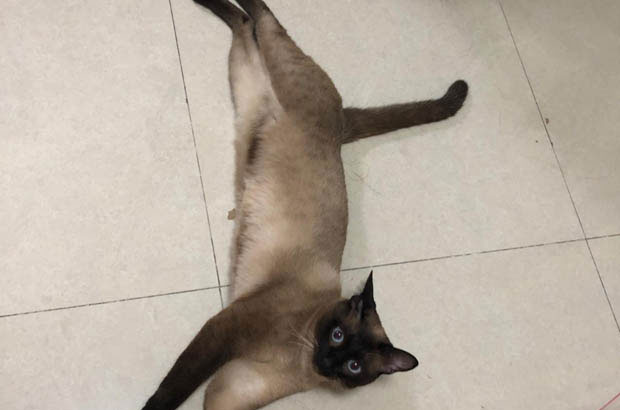In the pet world, Siamese cats have become the focus of attention with their unique fur color changes. Many people wonder: Why do Siamese cats gradually “turn black” during the raising process? In fact, this is not a simple feeding problem but a wonderful result of the interaction between the complex genetic mechanisms in Siamese cats and the external temperature, which can be regarded as a wonderful “symphony” between genes and temperature.
In the genetic sequence of mammals, the TYR gene plays a crucial role. It is like an accurate “commander,” dominating the synthesis of tyrosinase. Tyrosinase is a key “catalyst” for melanin synthesis, and the level of its activity directly determines the amount and speed of melanin production. For most animals, the normal TYR gene can ensure that tyrosinase works stably under suitable conditions, maintaining the relative stability of hair color. However, during the long evolutionary process, Siamese cats have undergone unique changes – the TYR gene has a deletion. This change at the genetic level makes it impossible for the synthesis of tyrosinase in Siamese cats to reach the normal level, resulting in tyrosinase being unable to function properly at normal body temperature.

It is precisely this genetic defect that endows Siamese cats with their magical “color – changing” ability. The body of a Siamese cat is like a precise “temperature sensor,” and its fur color changes with temperature fluctuations. When the external environment temperature drops, or the temperature of certain parts of the body is lower than a specific threshold, the originally “dormant” tyrosinase will be “awakened.” For example, parts of Siamese cats such as ears, face, limbs, and tails are more prone to heat dissipation and have relatively lower temperatures. In these areas, tyrosinase begins to become active, accelerating the synthesis and deposition of melanin, causing the fur color in these parts to gradually darken. As the temperature continues to drop, the range of dark areas on Siamese cats will expand, and the color will become darker. The originally light – colored fur seems to be dyed with a layer of ink, eventually presenting the familiar appearance of a “coal miner.”
So, is there a way to keep Siamese cats light – colored and prevent them from “turning black”? The answer is yes. Research has found that as long as the environmental temperature is controlled above 33°C, the tyrosinase in Siamese cats will be difficult to activate due to the high temperature, and the synthesis of melanin will slow down or even stop. This means that if owners want their Siamese cats to maintain a fresh light – colored appearance, they need to create a warm living environment for them. In cold winters, preparing warm little nests, using pet heating pads, and even dressing them in cute warm clothes are all effective warm – keeping measures. In this way, owners seem to have mastered the “code” to “control” the fur color changes of Siamese cats and can interfere with their “color – changing” process to a certain extent.
The “color – changing” characteristic of Siamese cats is not only an interesting biological phenomenon but also adds unique fun and challenges to pet raising. Every Siamese cat is a unique “color – changing elf,” and their fur color changes are like a vivid “temperature diary,” recording the changes in the environment and the passage of time. For owners, observing the fur color changes of Siamese cats is like exploring a world full of surprises, never knowing what they will look like next. With this magical characteristic, Siamese cats stand out among many pets and become a special existence in the hearts of many people. This wonderful phenomenon intertwined by genes and temperature makes Siamese cats not only cute pets but also like “living artworks” carefully created by nature, attracting countless people to understand, love, and care for them.
Leave a Reply